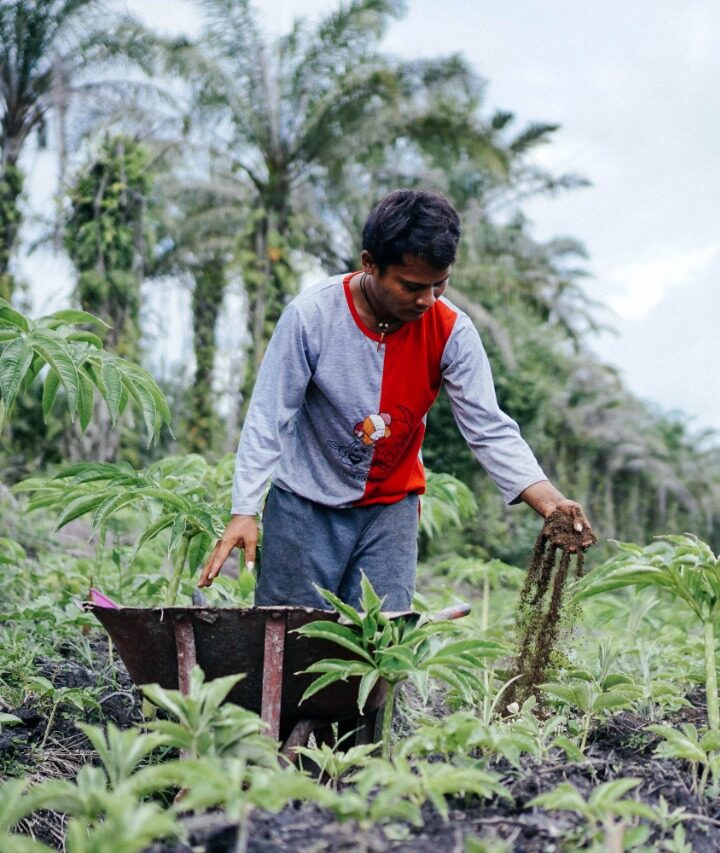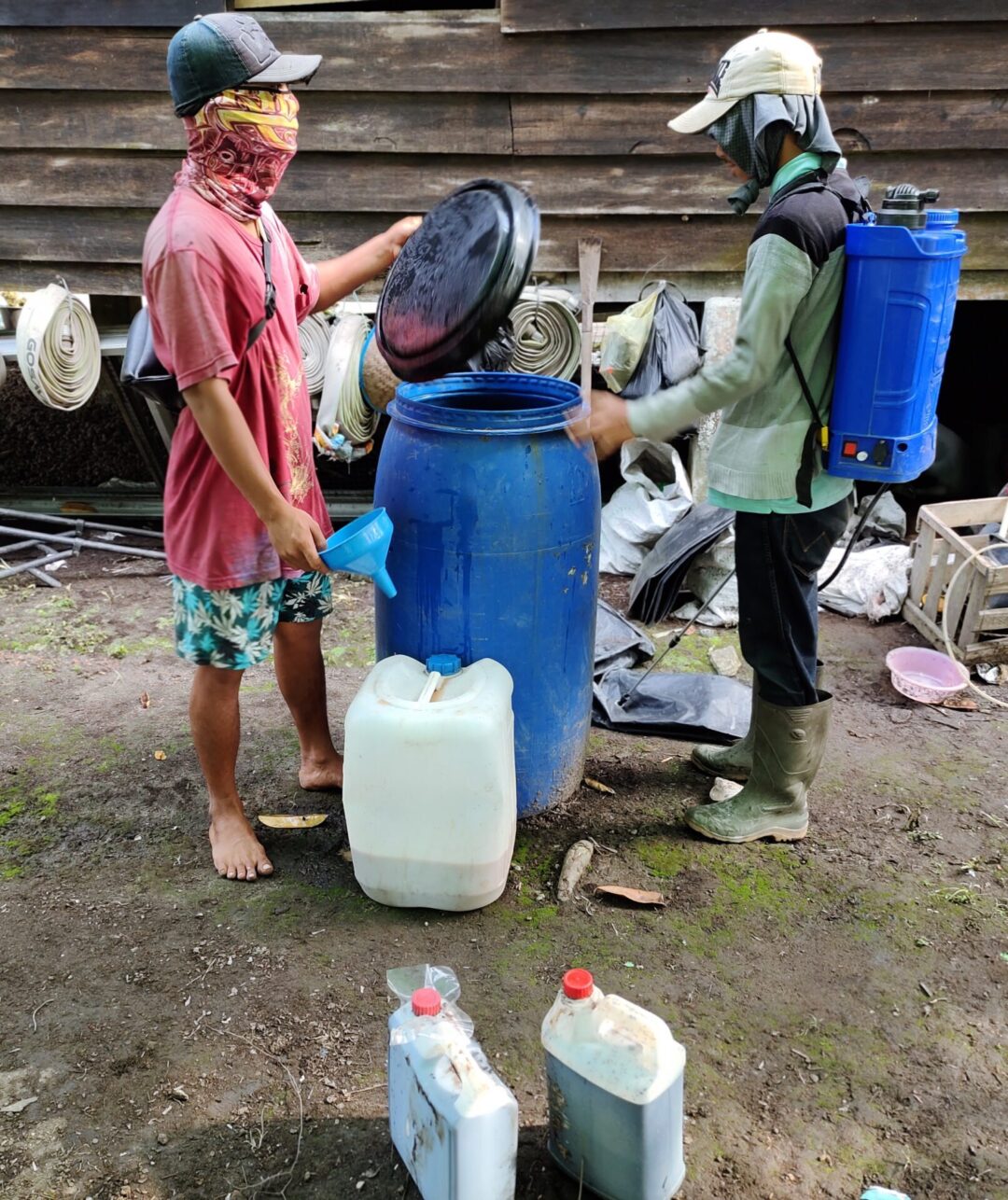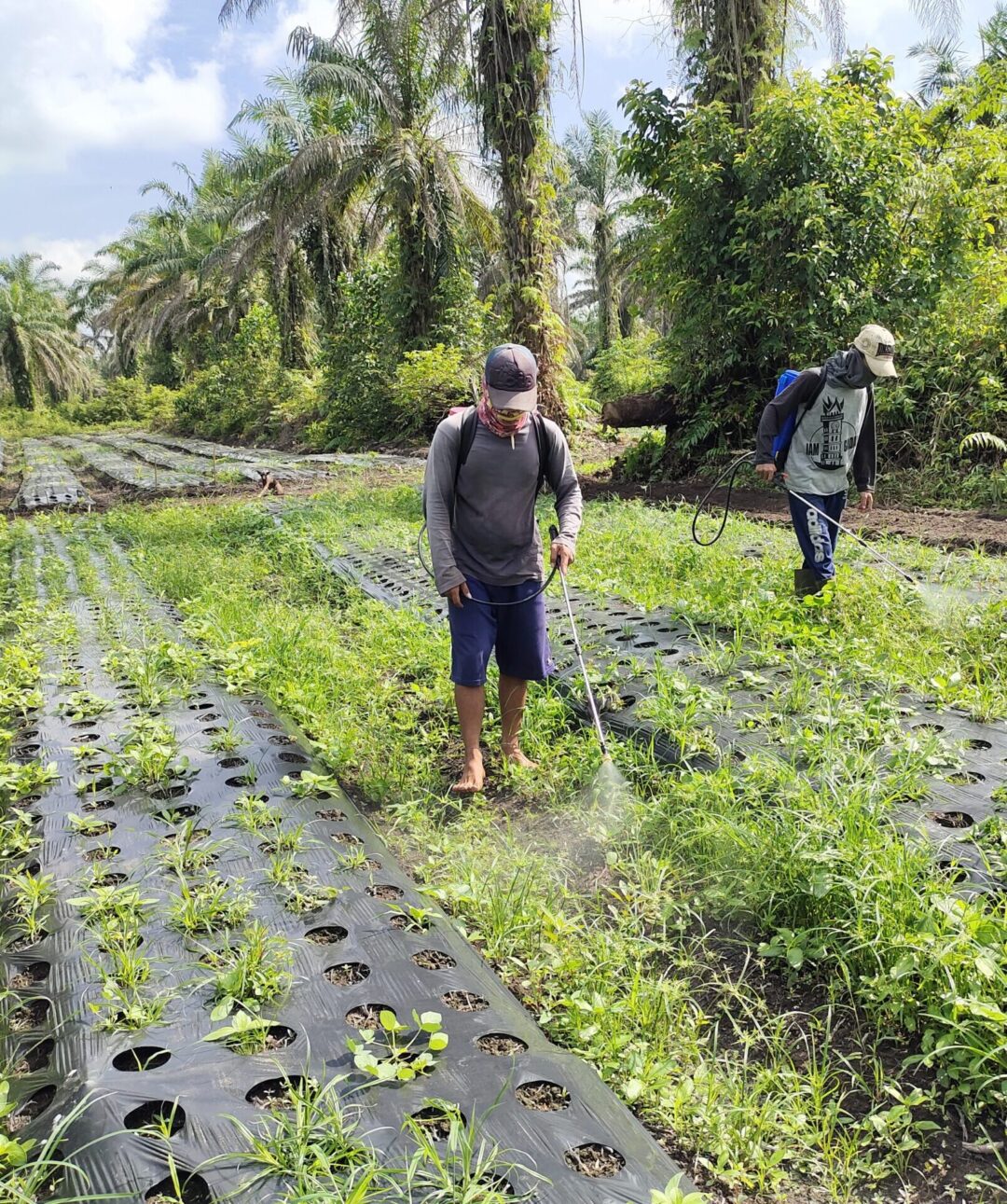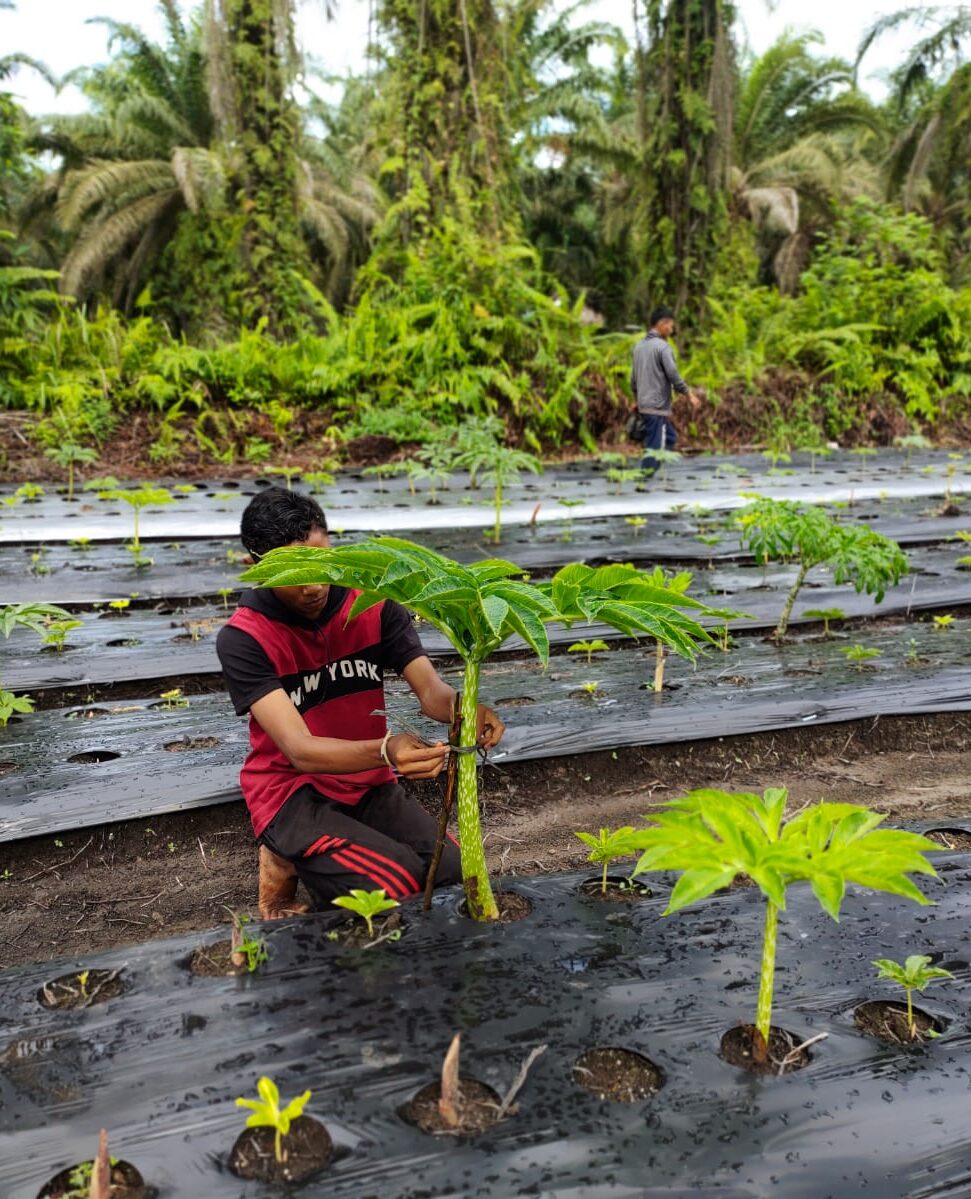The plant care program is very important during the 6 months konjac growth period. We need to make sure treatment is given to cut off the spread of any pest or disease. Watering is very crucial as konjac needs a massive supply of water but not drained. Continuous fertilizing (compost or organic liquid) and checking of soil PH level on a weekly basis to maintain a healthy growth of seeds.
Plant maintenance is an aspect that plays an important role in plant growth and development. Maintenance of this plant aims to ensure the needs of nutrients and plant water are fulfilled. Also to ensure plants are free from harmful plant-disturbing organisms. In general, Konjac plant maintenance includes watering, fertilizing, microbial spraying, humic acid spraying, pest control, weed control, and hoarding.
at this stage, farmers will carry out proper care starting from fertilization, water irrigation, weed cleaning, pest and disease control, and routine treatment every month to optimize plant growth. All of these processes are important to support plant growth and development to get the desired harvest. THe result itself will harvest the tubers in a optimal result as the company wants.

Watering using sprinklers in phases at the yellow konjac’s planting area of PT. Mitra Porang Nusantara. Watering with 100 percent pure water, no additives, to ensure the best absorption, watering should be done in the morning or evening. Watering is done on a case-by-case basis, depending on rainfall conditions in the planting region to keep the konjac plants hydrated or moist.
Every day, farmers have to consolidate the yellow konjac plants in the plantation region. Hand-pulling weeds that have grown around the planting hole and straightening up plants that have grown sideways due to soil erosion are among the chores. Weeding is done by cleaning weeds in the form of weeds that can be competitors for konjac plants in terms of water and nutrient requirements. Weeding the grass around the konjac plant can be done manually using hands, and weeding weeds around the beds can be carried out by conventional way.


In the second month following plant development, humic-acid spray is generally used. Stage 2 humid acid is beneficial for enhancing the permeability of plant membranes and aiding photosynthesis and the movement of plant nutrients. Increase plant production and viability using organic nutrient soil. Humic acid is a soil enhancer and organic chelate for the efficiency and effectiveness of fertilization, as well as a source of organic substances needed for plants to support more optimal plant metabolic activities.
Microbial spraying was also carried out twice, before planting and after planting. PT. Mitra Porang Nusantara also administered the second stage of micro-bacteria sprays on the growth of yellow konjac plants in the area. Microbial spraying was carried out one month after planting. Spraying might take place in the morning or evening (depending on weather conditions on the day of spraying). Microorganism Natural components are used to create solutions that serve as a medium for live and growing microorganisms that aid in the decomposition of organic debris. Through the fermentation process, the micro-bacteria solution may work as an organic matter reformer, protect roots from pests and illnesses, and serve as a liquid fertilizer. Microbes as biological fertilizers with their bioactive content can act as soil fertilizers that fertilize the soil and can provide nutrients for plants. Not only that, but it can also stimulate the root system to develop perfectly.


Mitra Porang Nusantara also used micro bacteria spray on the yellow konjac plants at the start of their growth. POC is provided on a monthly basis to ensure optimal development. Spraying can be done in the morning or evening (flexible) depending on the weather on the day of spraying. Liquid organic fertilizer for fruit serves as a stimulant for flower and fruit creation (generative development) while limiting shoot and tiller growth (vegetative development). In the process of generating compost/decomposers, Fruit Liquid Organic Fertilizer may also be utilized as a decomposer. The application of liquid organic fertilizer is carried out after the plants are two months after planting. This liquid organic fertilizer is given at a predetermined concentration given directly to the konjac plant. The purpose of this fertilization is to meet the nutrient requirements needed by plants for growth and development. Soil PH control is very important for konjac to grow healthily and to avoid any occurrence of unnecessary illness, hence the usage of dolomite is important either on a weekly or monthly basis.
Control of plant pests and diseases is carried out depending on the condition of the plant. Plant disease control is also carried out using fungicides on each ill plant during daily rotation by farmers. Caterpillars occurrence is usually happens in a small-scale plant area when konjac reaches the ages of 1-3 months, hence conventional removal is enough to avoid a widespread attack.
caterpillars rarely attack yellow konjac plants that are 4 months old and above, according to field experience, since the plant’s leaves have been growing old and contain high quantities of oxalate, which can poison these pests. However, if pests are discovered on yellow konjac plants, the best course of action is to handpick the leaf caterpillar bugs and toss them away from the plant’s growth region.


The census goal is to gather information for each block, such as the number of planting points with dead, missing, aberrant, or non-productive plants, as well as the density of plants and the state of the space that cannot be planted. In addition, the census goal is to enter information. A census of normal and aberrant plants must be conducted initially to ensure the number of plants that must be implanted. One month following planting, a census was conducted. Each blank area, plants that had a severe transplanting shock, stunted and aberrant plants were noted at the time of the census. The census is conducted on a block-by-block basis. The census and the construction of a crop map can both be done at the same time.
Consolidation is the first plant care activity after planting. The goal is to ensure the planting grows perfectly, upright, and grows healthy/normal. This is a daily chore that involves inspecting the state of yellow konjac’s plant development, including the roots, stems, and leaves. If an unwanted development is discovered, the gardener will note it, and the plant’s required to be re-placing.


This herbicide is applied when the weeds have grown. Post-growing herbicides are foliage applied herbicides or herbicides that are applied to weeds and can be systemic or non-systemic. Herbicides were sprayed around the boundaries of agricultural field beds and ditches. Herbicides are sprayed in the morning or evening (as needed) depending on the weed situation in the field. Herbicide spraying is done before harvesting to help in the harvesting process as well as the entry and exit of the harvested tubers into and out of transportation way.
Before commencing the yellow konjac planting, we sprayed a micro bacteria spray equally over the yellow konjac planting beds on the area. Spraying can be done in the morning or evening (flexible) depending on the weather that day. Microorganism Solutions are manufactured from natural components and serve as a living and growing substrate for microorganisms that aid in the decomposition of organic debris. Through the fermentation process, the micro-bacteria solution may work as an organic matter reformer, protect roots from pests and illnesses, and serve as a liquid fertilizer.

If you have any question regarding our company or related to Konjac Field, please do contact us right away.
Looking any information about konjac? Do search it on our website.
Copyright @ 2022-2023 | Designed by Creed Creatives